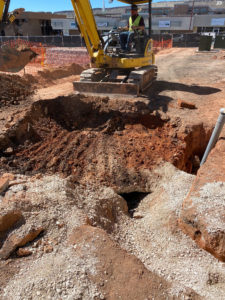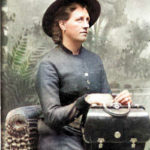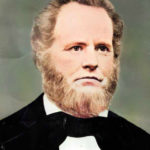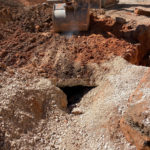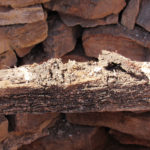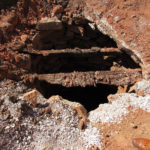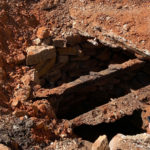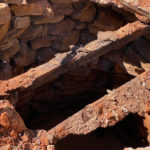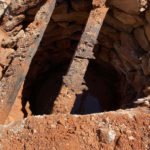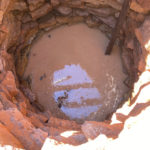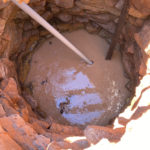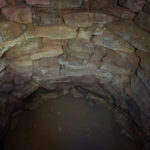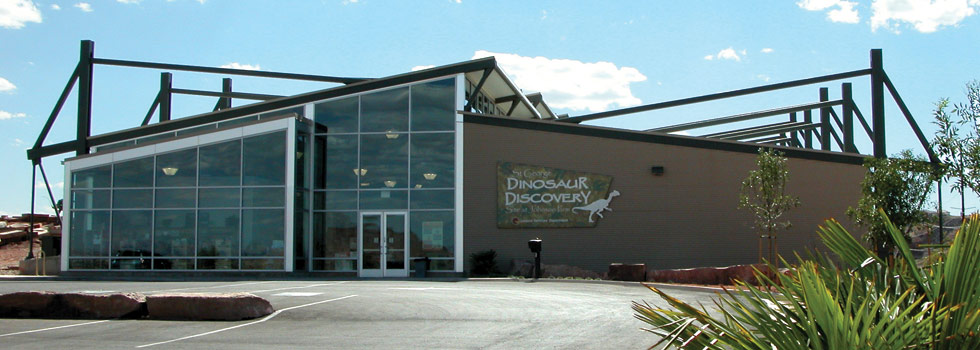Property History
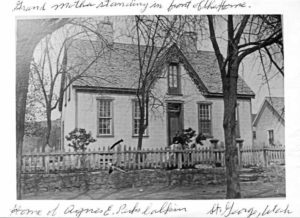
This well is located on a parcel first owned by Asa Starkweather Calkins* (Washington County Recorder 1876).
Asa was born on July 5, 1809, in Elizabeth Town, Essex, New York. He was the son of Captain John Calkins (a veteran of the War of 1812) and Lucy Kellogg. Asa became a successful lawyer and was authorized to practice in front to the Supreme Court of the State of New York. Asa married Mariette Symonds Barney on February 16, 1832, in Whitehall, New York. Together they had five children, all of whom died in infancy except Theodore John Calkins, who lived to age 25. The family moved to Iowa City, Iowa, in 1839, where they joined the Church of Jesus Christ of Latter-Day Saints. In 1850, Asa immigrated to Salt Lake City, Utah, with his family. Asa built a home on the corner of State Street and Broadway and settled into life in Salt Lake, working as a clerk in the Tithing Office and other jobs. The church elders felt that Asa could support a second wife, so he married Eliza Smith on October 6, 1852. Three years later, Asa was called on a mission to England, where he served for five years. An English Family (the Henry and Charlotte Perkes Family) took the missionary (Asa Calkins) into their home. He admired the Perkes’ daughter, Agnes Elizabeth, a nurse in Dudley, Worchester County, England. They were married on July 13, 1858, and Asa continued his missionary work while living with his in-laws. Asa and Agnes had a daughter named Amy Charlotte. At the end of his mission in 1860, Asa took his wife and daughter back to Salt Lake City, where they lived with his two other wives (Hagelberg 2013).
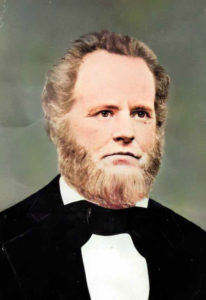 In October 1861, Brigham Young called 300 families to settle the St. George area; Asa’s family was one of them. By November, Asa was ready to move his family, including three wives, to southern Utah. Lots in the new town of St. George were selected by lottery. Asa was granted three lots, one for each wife. One of these lots includes the property where the well is situated. It is likely that Asa’s third wife, Agnes Elizabeth Perkes, lived here (Hagelberg 2013).
In October 1861, Brigham Young called 300 families to settle the St. George area; Asa’s family was one of them. By November, Asa was ready to move his family, including three wives, to southern Utah. Lots in the new town of St. George were selected by lottery. Asa was granted three lots, one for each wife. One of these lots includes the property where the well is situated. It is likely that Asa’s third wife, Agnes Elizabeth Perkes, lived here (Hagelberg 2013).
Agnes Elizabeth Perkes was born on February 23, 1840, in Dudley, Worcestershire, England. She was the daughter of Henry and Charlotte Catherine Lowe Perkes, the fourth of ten children. She moved to St. George in 1861 with her daughter, her husband, and his two other wives. Agnes’ life history indicates that early on in the small settlement of St. George, she worked with the local Paiute Indians to learn their language and to learn about their ways of practicing medicine. Ages served as a local doctor and midwife. She was called "The Doctor Lady" by the local Indians. Because of her relationship with the tribe, she was often called "to settle problems between the Indian and whites caused by improper communication." When it became clear that Agnes would be working as the local doctor, her husband Asa bought a horse and buggy for her to use to visit her patients. Asa and Agnes had five more children together; two boys and three girls. Asa died on February 15, 1873, leaving Agnes a 33-year-old widow.
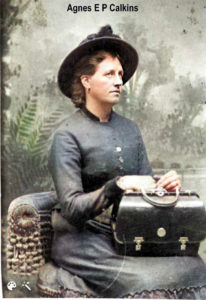 Agnes moved back to Salt Lake City for a while and lived there with her parents. While there, she completed her "diploma as a doctor of medicine" issued by the Territory of Utah (Washington County News 13 January 1916). Brigham Young then called her to serve the people of St. George as a doctor. Agnes returned to the home she had shared with Asa Calkins in St. George. In February 1878, Agnes married William Henry Thompson, the third of his five wives. Together, William and Agnes had three sons. Sometime after her last son’s birth in 1883, Agnes was divorced from William Thompson. Agnes continued to care for the people in St. George and Washington County while raising her seven living children until her death on January 9, 1916 (Hagelberg 1970).
Agnes moved back to Salt Lake City for a while and lived there with her parents. While there, she completed her "diploma as a doctor of medicine" issued by the Territory of Utah (Washington County News 13 January 1916). Brigham Young then called her to serve the people of St. George as a doctor. Agnes returned to the home she had shared with Asa Calkins in St. George. In February 1878, Agnes married William Henry Thompson, the third of his five wives. Together, William and Agnes had three sons. Sometime after her last son’s birth in 1883, Agnes was divorced from William Thompson. Agnes continued to care for the people in St. George and Washington County while raising her seven living children until her death on January 9, 1916 (Hagelberg 1970).
Wells in Early St. George
The well was uncovered during excavation for the new Washington County Building. It is a carefully constructed well made of stacked, shaped sandstone blocks. No mortar was visible in the upper courses of the well; the lower courses were covered in water and were not visible. Two deteriorated four by four beams were also present on the surface of the well. The upper portion of the well was likely torn down when it was covered.
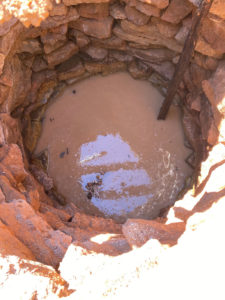 This well is extremely rare in the hot, arid desert environment of St. George. Water was one of the main concerns for the first settlers in St. George, both in quantity and quality. In 1863, Mayor Angus Cannon let out bids to sink a well on the public square. The well "was driven to quite a depth, but no water was secured." Drinking water was primarily obtained from local ditches during "Drinking Hour." Clair Terry, a young boy in early St. George, remembered "dipping water during Drinking Hour. The family had two barrels under a cottonwood tree — one for settling and one for use" (City of St. George 2010). Often one barrel was wrapped in cloth or an old quilt, and the wrapping soaked to keep the water cooler.
This well is extremely rare in the hot, arid desert environment of St. George. Water was one of the main concerns for the first settlers in St. George, both in quantity and quality. In 1863, Mayor Angus Cannon let out bids to sink a well on the public square. The well "was driven to quite a depth, but no water was secured." Drinking water was primarily obtained from local ditches during "Drinking Hour." Clair Terry, a young boy in early St. George, remembered "dipping water during Drinking Hour. The family had two barrels under a cottonwood tree — one for settling and one for use" (City of St. George 2010). Often one barrel was wrapped in cloth or an old quilt, and the wrapping soaked to keep the water cooler.
*Note: Sometimes Calkins is spelled with an S at the end and equally as often without an S at the end.
Gallery
Location
Share this Page
References Cited
City of St. George
2010 — Making the Desert Bloom: The Story of St. George Water. Accessed online 20 March, 2024.
Hagelberg, Elaine
1970 — Life story of Agnes Perkes Calkins Thompson. Accessed 20 March, 2024.
2013 — Life story of Asa Starkweather Calkins. Document located at Washington County Historical Society website.
Washington County News
1916 — A Good Woman Gone to Her Reward. Obituary for Agnes Elizabeth Perks Thompson. 13 January, St. George, Utah.
Washington County Recorder
1876 — Book K Page 31-32 [indicating that the property was left to the heirs of Asa Calkins]. Washington County Recorder’s Office, St. George, Utah.



